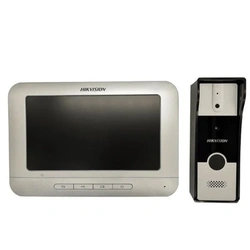
Short Metallic Door Magnetic Contact
A short metallic door magnetic contact is a critical component in security and alarm systems, providing reliable monitoring of doors, windows, or access points. Its ability to detect changes in the magnetic field and communicate these changes to the control panel is vital for enhancing security and safety in various settings.
- Magnetic Operation: The short metallic door magnetic contact consists of two main parts: a magnet and a reed switch. When the door or window is closed, the magnet is in proximity to the reed switch, keeping it closed. When the door or window is opened, the magnet moves away, causing the reed switch to open and trigger an event.
- Versatile Applications: This device is highly versatile and can be used to monitor a wide range of access points, including doors, windows, gates, cabinets, and even safes. Its versatility makes it a fundamental component in security systems.
- Compatibility: Short metallic door magnetic contacts are typically compatible with a variety of security and alarm systems. They can be easily integrated into both wired and wireless security setups, making them suitable for different installations.
- Reliability: These contacts are known for their reliability and durability. The absence of moving parts in the reed switch contributes to their long lifespan. They are designed to withstand regular use and environmental factors.
- Tamper Resistance: Many modern magnetic contacts have tamper-resistant features. If someone attempts to tamper with or remove the device, it can trigger an alarm or alert, enhancing security.
- Low Profile: The compact design of these contacts allows for discreet installation. They are often designed to be inconspicuous and blend with the surrounding decor, ensuring that they don't draw unnecessary attention.
- Low Power Consumption: Magnetic contacts typically have low power requirements, which means they can be powered by batteries or connected to a low-voltage power source. This makes them energy-efficient and suitable for long-term use without frequent battery changes.
| SKU | 2319 |
|---|
Reviews
This product does not have any reviews yet.
Add your reviewDescription
Short Metallic Door Magnetic Contact
A short metallic door magnetic contact, often known as a magnetic reed switch or door/window sensor, is a fundamental component in security and alarm systems. Its primary purpose is to monitor the status of doors, windows, or other access points, providing a crucial layer of security in various environments, including residential, commercial, and industrial settings.
Components:
-
Reed Switch: The heart of the magnetic contact is the reed switch, which consists of two thin, flexible pieces of ferrous material encased in a glass tube. These materials are chosen for their high magnetic susceptibility, making them highly responsive to changes in magnetic fields.
-
Magnet: An accompanying magnet is typically mounted on the moving part of the door, window, or access point that you want to monitor. When the door is closed, the magnet aligns with the reed switch.
-
Wiring: The magnetic contact has a pair of wires attached to it, which connect to the security system or alarm panel. These wires allow for communication between the sensor and the control panel.
Functions:
-
Status Monitoring: The primary function of a short metallic door magnetic contact is to monitor the status of a door, window, or access point. When the monitored entryway is closed, the magnet aligns with the reed switch, keeping it in a closed state. This is known as the "closed circuit" state.
-
Triggering Alarms: When the door or window is opened, the magnet moves away from the reed switch, breaking the magnetic field. This causes the reed switch to change state from closed to open, creating an "open circuit." This change in circuit status is detected by the security system or alarm panel.
-
Alerting Security System: Upon detecting the open circuit, the sensor sends a signal to the security system or alarm panel. The control panel interprets this signal as a breach or unauthorized entry, triggering an alarm, such as a siren, notifying authorities, or initiating other programmed security responses.
-
Tamper Detection: Some magnetic contacts are designed with tamper detection features. They can trigger an alarm if someone tries to tamper with or manipulate the sensor, ensuring that attempts to disable the security system are also detected.
-
Low-Battery Alerts: Many modern magnetic contacts are battery-powered. They may include low-battery monitoring and send alerts to the control panel when the battery needs replacement, ensuring the sensor remains operational.






